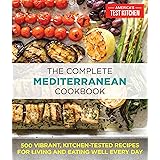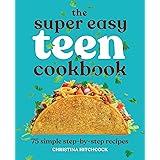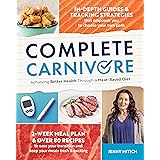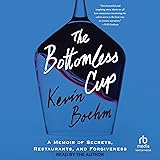Have you ever watched a cooking show or ordered at a restaurant in English and felt a little lost when certain food items were mentioned? It is a common experience, especially when dealing with specific food categories. Just as the video above might have visually presented a delightful array of dairy products, understanding the vocabulary and context around these items is essential for any English learner.
The world of food, especially dairy products, is vast and fascinating. Learning about these items, their origins, and their uses not only expands your English vocabulary but also enriches your understanding of global cuisines and nutritional facts. This article aims to provide a comprehensive look at dairy, building on the visual information you might have just seen.
Understanding Dairy Categories: What Are Dairy Products?
Dairy products are generally defined as food items that are derived from the milk of mammals, most commonly cows, but also goats, sheep, and buffalo. These products form a significant part of diets across many cultures worldwide, offering a wide range of flavors and nutritional benefits. They are processed in various ways to create the diverse selection we see in stores today.
Furthermore, the processing of dairy milk often involves steps like pasteurization and homogenization. Pasteurization, for instance, is a heat treatment that kills harmful bacteria, ensuring the safety of the milk. Homogenization, on the other hand, breaks down fat globules to prevent cream from separating, resulting in a smoother, more uniform texture.
Milk: The Foundation of Dairy
Milk itself is perhaps the most fundamental dairy product. It is consumed directly as a beverage and serves as the primary ingredient for countless other dairy items. Different types of milk are available, often categorized by their fat content, such as whole milk, 2% reduced-fat milk, 1% low-fat milk, and skim milk.
Beyond cow’s milk, other animal milks are also popular globally. Goat’s milk, for example, is consumed by millions worldwide and is sometimes preferred for its distinct flavor and digestibility. Sheep’s milk is also valued, especially in certain regions, for its richness and use in specific cheese varieties.
A World of Cheese: From Soft to Hard
Cheese is an incredibly diverse dairy product, celebrated in virtually every corner of the world. It is made by coagulating the casein protein in milk, which separates solids from liquids. The resulting curd is then pressed, aged, and sometimes flavored, leading to an astonishing variety.
Hard cheeses, such as cheddar and Parmesan, are typically aged for longer periods, resulting in a firmer texture and more intense flavor. Conversely, soft cheeses like brie, mozzarella, and ricotta are often consumed fresh or after shorter aging times. A 2022 report indicated that global cheese consumption continues to rise, with an estimated 28 million metric tons being consumed annually, underscoring its widespread appeal.
Yogurt and Fermented Favorites: Probiotic Powerhouses
Yogurt, kefir, and other fermented dairy products are made by adding beneficial bacteria cultures to milk. These cultures convert the milk sugar (lactose) into lactic acid, which thickens the milk and gives it a tangy flavor. These products are known for their probiotic content, which supports gut health.
For instance, a study published in the journal *Nutrients* highlighted the positive effects of regular yogurt consumption on digestive health and immune function. There are many variations, including Greek yogurt, which is strained to remove whey, resulting in a thicker, higher-protein product, and kefir, a fermented milk drink with a slightly tart taste and creamy consistency.
Butter and Cream: Rich Additions to Culinary Delights
Butter is a dairy product made by churning fresh or fermented cream, separating the butterfat from the buttermilk. It is widely used as a spread, a cooking fat, and an ingredient in baking, providing richness and flavor. Cream, a fat-rich layer skimmed from the top of milk before homogenization, is also used in various forms.
Different types of cream are available, such as heavy cream, whipping cream, and sour cream, each with specific uses in cooking and confectionery. These products contribute significantly to the texture and taste of many dishes, from creamy sauces to decadent desserts, making them indispensable in many kitchens.
Nutritional Insights and Health Considerations of Dairy
Dairy products are often lauded for their nutritional benefits. They are an excellent source of calcium, which is vital for bone health, and provide high-quality protein, essential for muscle repair and growth. Additionally, many dairy items are fortified with vitamins such as Vitamin D, which aids in calcium absorption.
However, it is also important to acknowledge common dietary considerations. Lactose intolerance, for example, affects a significant portion of the global population. Globally, it is estimated that about 68% of the world’s population experiences some form of lactose malabsorption, meaning their bodies struggle to digest the sugar in milk. For these individuals, lactose-free dairy options or plant-based alternatives have become invaluable.
Dairy Around the Globe: Cultural Significance
The consumption and cultural significance of dairy products vary immensely worldwide. In India, for instance, dairy, particularly ghee (clarified butter) and paneer (fresh cheese), plays a central role in both cuisine and religious rituals. In many European countries, cheese making is a deeply ingrained tradition with centuries of history, producing hundreds of unique varieties.
These cultural nuances not only highlight the versatility of dairy but also offer interesting avenues for language learners. Discussing regional dairy specialties can provide insight into local customs and broaden one’s understanding of global food landscapes.
Essential English Vocabulary for Dairy Products
For those learning English, mastering vocabulary related to dairy products can greatly enhance communication in everyday situations. Here is a list of key terms and phrases often encountered when discussing dairy:
- Milk: The basic fluid, often specified as whole, skim, or 2%.
- Cheese: A broad category, with types like “cheddar,” “mozzarella,” “brie,” “feta,” and “Swiss.”
- Yogurt: A fermented milk product, often described by its thickness (“Greek yogurt”) or flavor (“strawberry yogurt”).
- Butter: Used for spreading, cooking, and baking.
- Cream: Such as “heavy cream” (for whipping) or “sour cream” (for toppings).
- Lactose: The natural sugar found in milk.
- Lactose-free: Products specially processed for those who cannot digest lactose.
- Dairy-free: Products made without any milk-derived ingredients, often plant-based.
- Curd: The solid part of milk that separates during cheese making.
- Whey: The liquid part of milk that separates from the curd.
- Pasteurization: The heating process that kills harmful bacteria in milk.
- Homogenization: The process that breaks down fat particles in milk to prevent separation.
- Probiotics: Beneficial bacteria found in fermented dairy, like yogurt and kefir.
By familiarizing yourself with these terms, ordering at a café, shopping for groceries, or following a recipe in English becomes much easier. Understanding these specific words and their contexts can significantly boost your confidence as an English speaker.
Expanding Your English and Culinary Horizons
As you have seen, dairy products are incredibly diverse and play a crucial role in diets and cultures worldwide. From the simple glass of milk to the complex flavors of aged cheese, the journey through dairy is rich with learning opportunities. Delving into the vocabulary and specifics of dairy products can be an enjoyable and effective way to enhance your English language skills, especially for those who appreciate food.
We hope this exploration of dairy products complements the visual experience of the video above, providing a solid foundation for your continued learning journey. Keep exploring, tasting, and discussing these fascinating food items in English!











